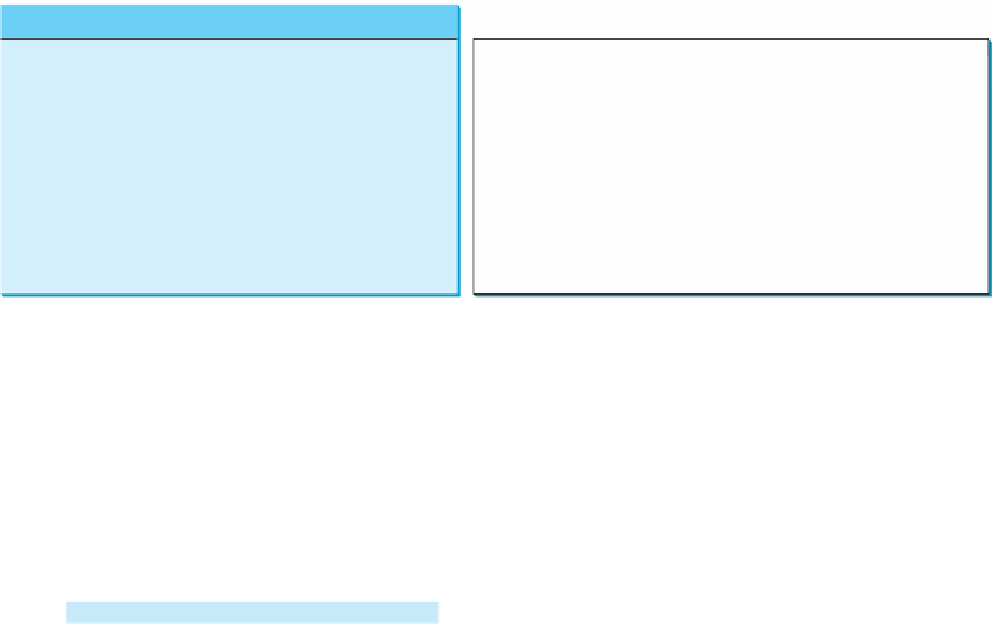Java Reference
In-Depth Information
A frame is a window for holding other GUI components.
Key
Point
To create a user interface, you need to create either a frame or an applet to hold the user-
interface components. This section introduces frames. Creating Java applets will be intro-
duced in Chapter 18.
12.4.1 Creating a Frame
To create a frame, use the
JFrame
class, as shown in Figure 12.2.
javax.swing.JFrame
+JFrame()
+JFrame(title: String)
+setSize(width: int, height: int): void
+setLocation(x: int, y: int): void
+setVisible(visible: boolean): void
+setDefaultCloseOperation(mode: int): void
+setLocationRelativeTo(c: Component):
Creates a default frame with no title.
Creates a frame with the specified title.
Sets the size of the frame.
Sets the upper-left-corner location of the frame.
Sets true to display the frame.
Specifies the operation when the frame is closed.
Sets the location of the frame relative to the specified component.
If the component is null, the frame is centered on the screen.
void
Automatically sets the frame size to hold the components in the
frame.
+pack(): void
F
IGURE
12.2
The
JFrame
class is used to create a window for displaying GUI components.
The program in Listing 12.1 creates a frame.
L
ISTING
12.1
MyFrame.java
1
import
javax.swing.JFrame;
import package
2
3
public class
MyFrame {
4
public static void
main(String[] args) {
5 JFrame frame =
new
JFrame(
"MyFrame"
);
// Create a frame
6 frame.setSize(
400
,
300
);
// Set the frame size
7
// Center a frame
8 frame.setDefaultCloseOperation(JFrame.EXIT_ON_CLOSE);
9 frame.setVisible(
true
);
// Display the frame
10 }
11 }
create frame
set size
center frame
close upon exit
display the frame
frame.setLocationRelativeTo(
null
);
The frame is not displayed until the
frame.setVisible(true)
method is invoked.
frame.setSize(400, 300)
specifies that the frame is
400
pixels wide and
300
pixels
high. If the
setSize
method is not used, the frame will be sized to display just the title bar.
Since the
setSize
and
setVisible
methods are both defined in the
Component
class, they
are inherited by the
JFrame
class. Later you will see that these methods are also useful in
many other subclasses of
Component
.
When you run the
MyFrame
program, a window will be displayed on the screen (see
Figure 12.3a).
Invoking
setLocationRelativeTo(null)
(line 7) centers the frame on the screen.
Invoking
setDefaultCloseOperation(JFrame.EXIT_ON_CLOSE)
(line 8) tells the pro-
gram to terminate when the frame is closed. If this statement is not used, the program does not
terminate when the frame is closed. In that case, you have to stop the program by pressing
Ctrl+C
at the DOS prompt window in Windows or stop the process by using the kill command





